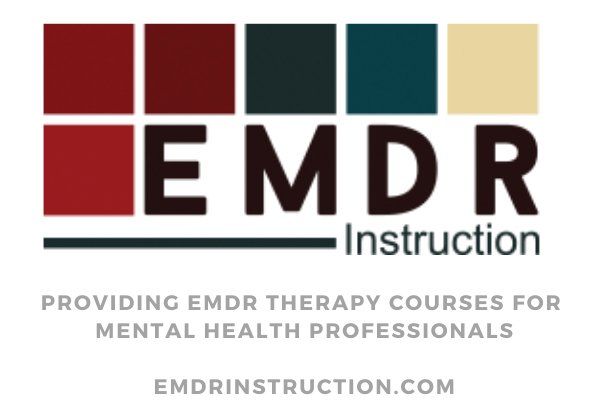FAQs About EMDR Therapy
Are you curious about Eye Movement Desensitization and Reprocessing (EMDR) therapy as a professional? In this blog article, we will answer some of the most frequently asked questions about EMDR therapy so that you can better understand how it works and how it could benefit your practice.
What Is EMDR?
EMDR treatment is a psychotherapy practice that assists people who have been through trauma or other upsetting life events. It can help limit the vividness, magnitude, and sentiments of traumatic memories.
What Can a Patient Expect During an EMDR Session?
The psychotherapist will move their fingers back and forth in front of the person's face throughout the EMDR session and urge them to focus on the movement with their eyes as well as a distressing event and its content.
The therapist will ask the subject to recollect an unpleasant experience, including external sensory information, feelings, thoughts, and bodily sensations that accompanied it. During the session, the brain’s ability to reprocess information transforms the event into a benign experience. Some therapists may substitute tactile or auditory bilateral stimulation for eye movements according to the client’s preference.
The purpose of EMDR is to reduce the impact of distressing feelings related to a traumatic experience or other psychological issues. The psychotherapist will request that the patient rate their level of distress prior to and following each EMDR treatment to track the treatment's success.
How Does EMDR Work?
EMDR therapy uses eight phases during the process.
- History and information gathering: During this phase, the therapist gathers details about the patient and their background. This information assists the therapist in deciding what are the underlying issues associated with the client’s presenting difficulties, as well as the client's readiness to begin memory work. The treatment plan is also developed during this phase which is a list of the memories to be addressed during phases 3 through 7.
- Preparation and education: The therapist informs the patient of how the EMDR sessions will function and what to anticipate during the phases. The patient receives tools to assist them in regulating their emotions in order to rehearse and practice before working with memories.
- Assessment: The psychotherapist helps the patient to identify components associated with the memory. This is done by asking and then identifying images, thoughts, emotions, physical sensations and taking baseline measures.
- Desensitization and reprocessing: The therapist initiates reprocessing to work with the memory. The client is asked to focus on certain components of the memory while bilateral stimulation is utilized. This continues until the memory is no longer disturbing. This process can take one session or more than one session to complete.
- Installation: During this phase the client will pair the positive assessment of herself with the memory. This results in a more accurate assessment of herself in relation to what happened.
- Body scan: The therapist instructs the individual to concentrate on the memory and the positive assessment of herself. While she does this, she is asked to identify any emotional tension or unusual sensations. If there are, then bilateral stimulation is initiated again until the sensation dissipates. This is to make sure that there are no negative components of the memory left behind and unprocessed.
- Closure and stabilization: This phase helps the client to feel grounded and in control of themselves after the session. The psychotherapist will discuss with the patient what to anticipate between the appointments, how to stabilize oneself, and any new views they have regarding the upsetting event.
- Re-evaluation and continuing care: The last phase is utilized to make sure that previous work is complete before moving on to any new memories. The clinician is also assessing how well the client is moving through the memories on the treatment plan. The client is also being assessed for how well they are doing week to week and are they making better choices in the present and the future.
Contact us at EMDR Instruction to receive education and certification in EMDR practice.
Steps to Get Started
01. Check Eligibility
Check to see if you meet the minimum requirements for our EMDR Therapy Training Courses at EMDR Instruction.
02. Register
Reserve your Course Registration for our Upcoming EMDR Training Course at EMDR Instruction by clicking here.
03. Pay
Once you have completed your Course Registrations, you will be redirected to make your Course Payments for Part 1 and Part 2 of the EMDR Training Courses.
Steps to Get Started
01. Check Eligibility
Check to see if you meet the minimum requirements for our EMDR Therapy Training Courses at EMDR Instruction.
02. Register
Reserve your Course Registration for our Upcoming EMDR Training Course at EMDR Instruction by clicking here.
Pay
Once you have completed your Course Registrations, you will be redirected to make your Course Payments for Part 1 and Part 2 of the EMDR Training Courses.
CONTACT INFORMATION
Phone: (318) 834-0969
Email: billwhiteks@gmail.com
Other Email: info@emdrinstruction.com
BUSINESS HOURS
- Mon - Thu
- -
- Fri - Sun
- Closed
Office Hours: Closed Major Holidays
The times above are office hours for clients and are not really relevant to the course dates.
PAYMENT METHODS
Uses CE-Go for payments

Contact Us
We will get back to you as soon as possible.
Please try again later.
CONTACT INFORMATION
Phone: (318) 834-0969
Email: billwhiteks@gmail.com
Other Email: info@emdrinstruction.com
BUSINESS HOURS
- Mon - Thu
- -
- Fri - Sun
- Closed
Office Hours: Closed Major Holidays
The times above are office hours for clients and are not really relevant to the course dates.
PAYMENT METHODS
Uses CE-Go for payments

Contact Us
We will get back to you as soon as possible.
Please try again later.
CONTACT INFORMATION
Phone: (318) 834-0969
Email: billwhiteks@gmail.com
Other Email: info@emdrinstruction.com
BUSINESS HOURS
- Mon - Thu
- -
- Fri - Sun
- Closed
Office Hours: Closed Major Holidays
The times above are office hours for clients and do not pertain to the course dates.
PAYMENT METHODS
Use CE-Go for payments

Contact Us
We will get back to you as soon as possible.
Please try again later.



